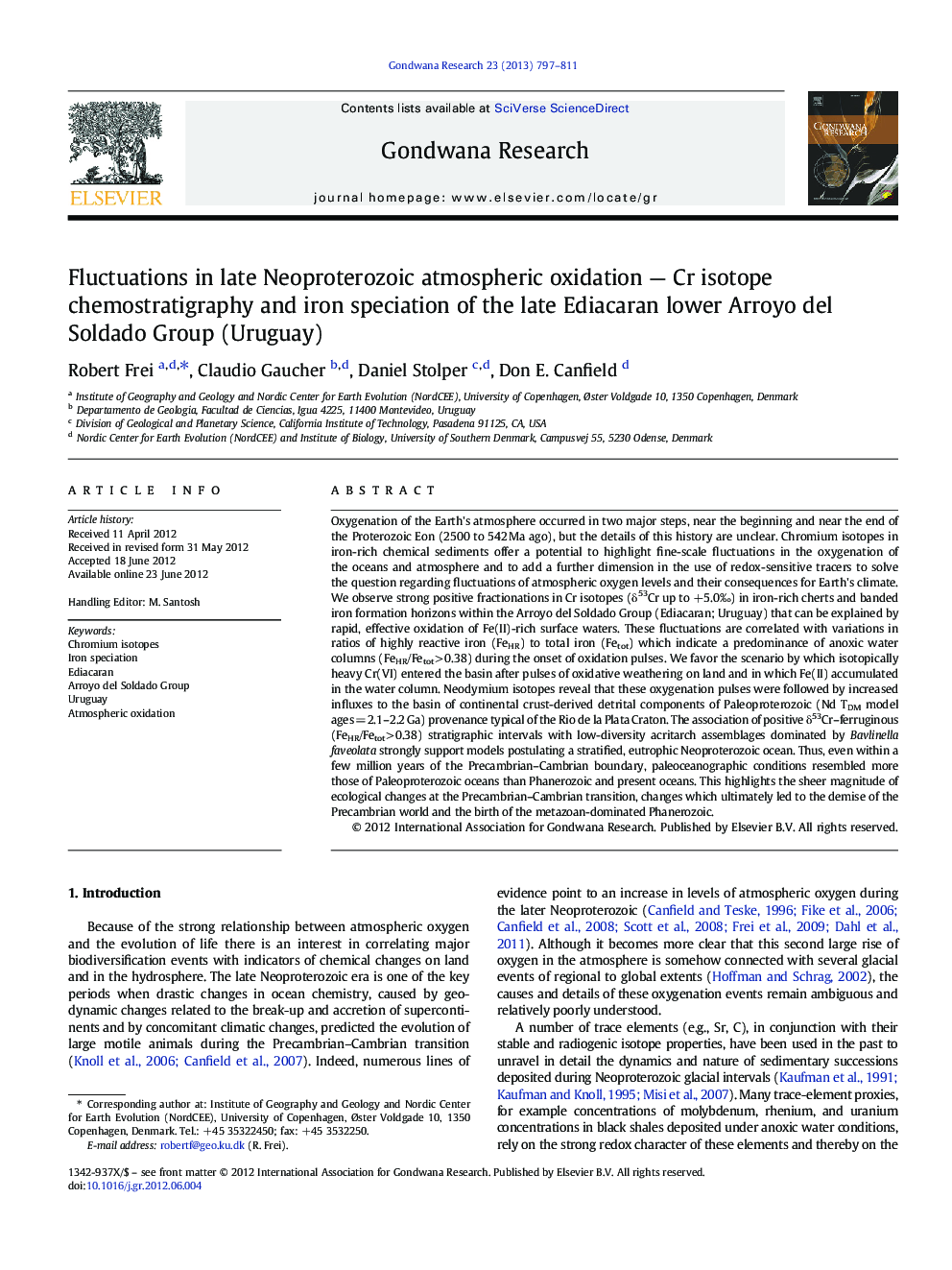| کد مقاله | کد نشریه | سال انتشار | مقاله انگلیسی | نسخه تمام متن |
|---|---|---|---|---|
| 4727470 | 1356379 | 2013 | 15 صفحه PDF | دانلود رایگان |

Oxygenation of the Earth's atmosphere occurred in two major steps, near the beginning and near the end of the Proterozoic Eon (2500 to 542 Ma ago), but the details of this history are unclear. Chromium isotopes in iron-rich chemical sediments offer a potential to highlight fine-scale fluctuations in the oxygenation of the oceans and atmosphere and to add a further dimension in the use of redox-sensitive tracers to solve the question regarding fluctuations of atmospheric oxygen levels and their consequences for Earth's climate. We observe strong positive fractionations in Cr isotopes (δ53Cr up to + 5.0‰) in iron-rich cherts and banded iron formation horizons within the Arroyo del Soldado Group (Ediacaran; Uruguay) that can be explained by rapid, effective oxidation of Fe(II)-rich surface waters. These fluctuations are correlated with variations in ratios of highly reactive iron (FeHR) to total iron (Fetot) which indicate a predominance of anoxic water columns (FeHR/Fetot > 0.38) during the onset of oxidation pulses. We favor the scenario by which isotopically heavy Cr(VI) entered the basin after pulses of oxidative weathering on land and in which Fe(II) accumulated in the water column. Neodymium isotopes reveal that these oxygenation pulses were followed by increased influxes to the basin of continental crust-derived detrital components of Paleoproterozoic (Nd TDM model ages = 2.1–2.2 Ga) provenance typical of the Rio de la Plata Craton. The association of positive δ53Cr–ferruginous (FeHR/Fetot > 0.38) stratigraphic intervals with low-diversity acritarch assemblages dominated by Bavlinella faveolata strongly support models postulating a stratified, eutrophic Neoproterozoic ocean. Thus, even within a few million years of the Precambrian–Cambrian boundary, paleoceanographic conditions resembled more those of Paleoproterozoic oceans than Phanerozoic and present oceans. This highlights the sheer magnitude of ecological changes at the Precambrian–Cambrian transition, changes which ultimately led to the demise of the Precambrian world and the birth of the metazoan-dominated Phanerozoic.
Figure optionsDownload as PowerPoint slideHighlights
► Chromium isotopes highlight fluctuations in the oxygenation of the oceans and atmosphere.
► These fluctuations are correlated with variations in ratios of highly reactive iron to total iron.
► Nd isotopes show that oxygenation pulses were followed by increased continental influxes.
Journal: Gondwana Research - Volume 23, Issue 2, March 2013, Pages 797–811